Last week we took some time to explore the wilds of Adventureland in this Samland classic. The tour continues today in our second part. If you missed the first part, please click here.

Adventureland has seemingly changed little since it first opened. On opening day, the Jungle Cruise was the only attraction. By 1962, the area was freshened up with two artificial trees. One was in the Tahitian Terrace, a Polynesian style restaurant with a hula show, and the other was the Swiss Family Treehouse. You could also bag some big game at the new The Safari Shooting Gallery.
In 1963, Walt Disney’s Enchanted Tiki Room opened to the public. The Tiki Room would be Crump’s next assignment. Master scuplter Blaine Gibson was first assigned the task to create the tikis that would populate the attraction but he was too busy on other projects. So he asked Rolly to do the job. Rolly’s attitude of doing whatever he asked proved to be handy considering he never sculpted before but that didn’t stop him. Today his work not only resides at the Tiki Room but his icons have found their way to Florida’s version of the attraction and they can also be seen throughout the Polynesian Resort. Rolly was also responsible for the bird mobile in the Tiki room.
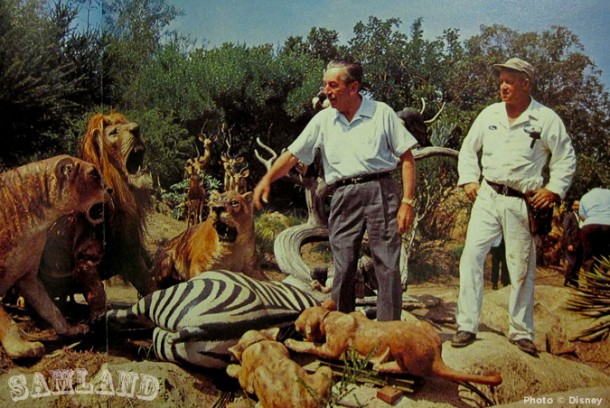
Another 1963 addition to Adventureland was a bit of humor to the Jungle Cruise. Animator Marc Davis penned a number of scenes that help to move the attraction away from being serious to the comedic. These additions include the African Veldt and the Safari having a close encounter with a rhinoceros.
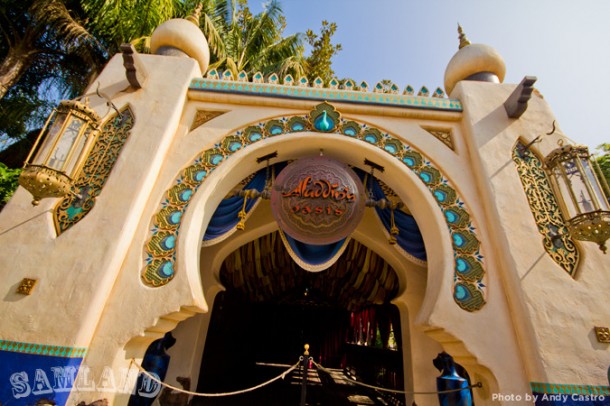
Then there was nothing until 1976 when seven new scenes were added to the Jungle Cruise. In 1985, the Jungle Cruise received a much-needed major rehab. Sadly, in 1993, the Tahitian Terrace was closed and the space reappeared as Aladdin’s Oasis.
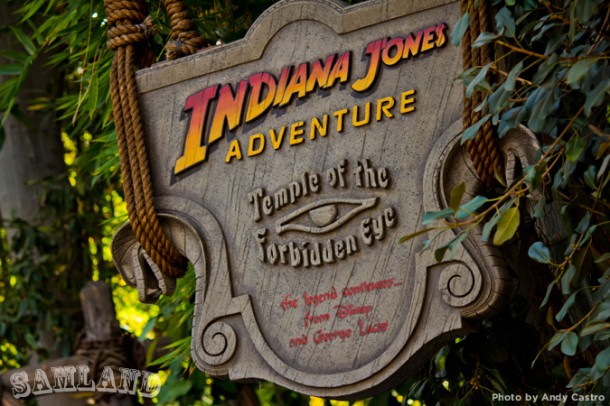
Big changes came in 1995, just in time to celebrate the park’s 40th anniversary. Indiana Jones Adventure – Temple of the Forbidden Eye, a brand-new, state-of-the-art thrill ride was installed. Plus, the Jungle Cruise was significantly changed with new boats, boathouse, and a thematic overlay consistent with Indy’s 1930s time frame.
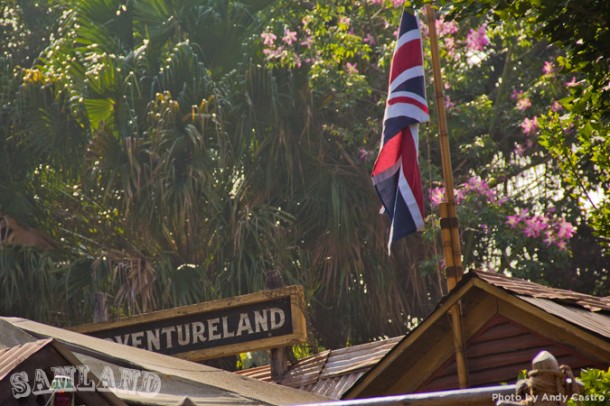
The boathouse was given a backstory. Some say that this part of Adventureland was first discovered by French soldiers and became part of a European colonization effort. Because of the surrounding dangers, the soldiers began a business that evolved into a water safari for tourists. Since French was the international language before World War II, you will frequently find French words scattered about the waiting area. The structure was designed to imply that nature has overtaken the building. It looks like it is sinking on one side and the gaps in the rooftops and railings are damaged by tree branches. Upstairs there are dangerous insects and a cobra in the rafters. The boathouse featured music from the era plus the costumes and spiel were modified to fit within the elements of the setting.
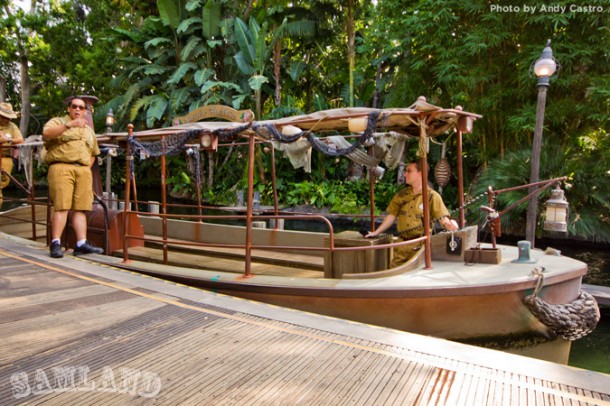
The boats also underwent a redesign from bright colored excursion boats to something a bit more distressed. To accommodate the Indy queue, a portion of the Jungle Cruise River was moved.
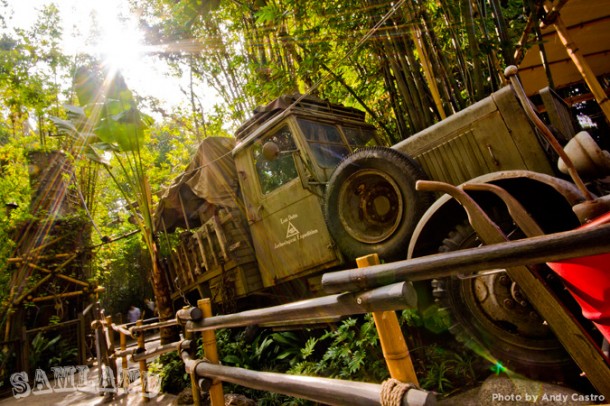
Reminders of the Indiana Jones films are scattered throughout the land. A prime example is the big military truck at the exit of theIndiana Jones Adventure – Temple of the Forbidden Eye. Hardcore fans will recognize that this was the vehicle central to one of the most memorable scenes from Raiders of the Lost Ark. As Indy is fighting off the bad guys he hangs on to and ultimately crawls under this truck as it is speeding along. Yes, this is that truck. The golf balls you see sticking out of the bumper were used for the car chase stunt in the film and not standard issue. Today, the truck has changed missions and is part of the “Lost Delta Archeological Expeditions.”
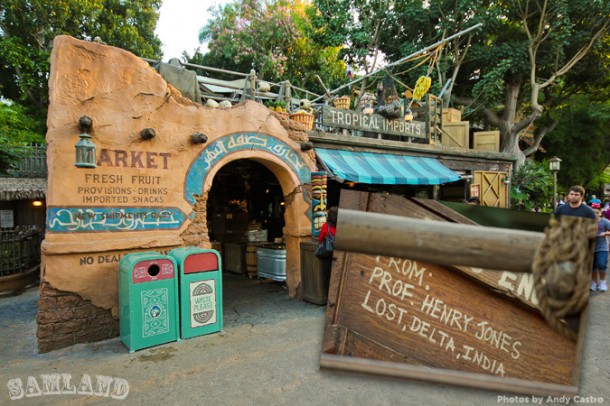
Above the Tropical Imports store are some of Indy’s findings. Hmmm. Wonder if they will make it back to the University? For a brief period in the Summer of 2008, Indiana came to life and performed in a stunt show utilizing the various buildings throughout Adventureland.
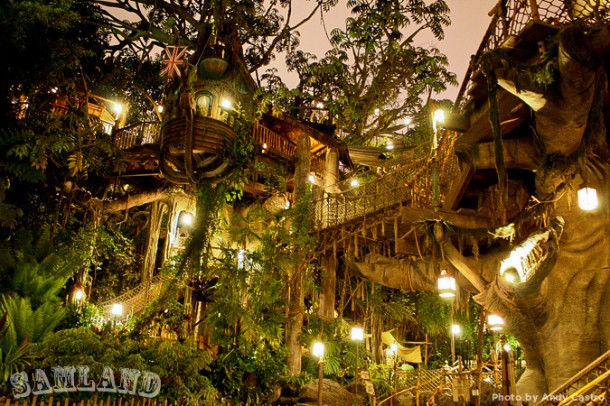
By 1999, the Swiss Family moved out of the Treehouse and Tarzan moved in. The 50th anniversary of Disneyland in 2005 provided an excuse to give the Jungle Cruise some major TLC. New scenes were added including the piranhas and the gun happy gorillas.
It is common knowledge that key people involved in the development of Disneyland are honored with their names on a window along Main Street. There is only one such tribute in Adventureland and that goes to one of the most important influences on the theme park industry – Harper Goff.
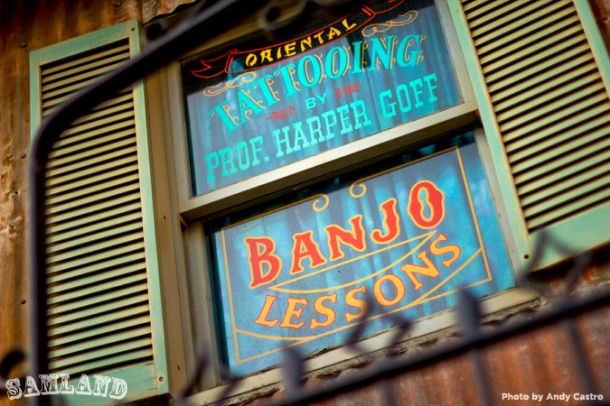
The Harper Goff window is just beyond the storefronts on the right hand side. You will come upon a small set of stairs. Look up at the windows on the upper floor (or walk up the steps up to the gate) you can see one stenciled with “Oriental Tattooing by Prof. Harper Goff.” On the lower pane you can see he also offers “Banjo Lessons.”
Who is this mysterious Harper Goff? Was he a character in a forgotten film? After all, isn’t the rule that everything needs to tie into another Disney property? Not in this case. Harper Goff was one of Walt’s first Imagineers and had a huge influence on the design of Disneyland. If anybody deserves to be recognized, it is Goff.
Harper Goff was born in Fort Collins Colorado in 1911. His family moved to Santa Ana and he went to the Chouinard Art Institute. From there he worked at Warner Brothers as a set designer with credits ranging from Casablanca to Sergeant York to The Adventures of Don Juan.
But it was a fateful day in England in 1951 that would change everything. Goff absolutely loved model steam trains. These miniature workhorses were very popular at the time. He was at Basset-Lowke, the place to buy a model locomotive, and spotted an engine that he wanted. He was told the locomotive was on hold for a gentleman but if he came back and the other guy did not want it, Goff could buy it. To Goff’s surprise the other guy was Walt Disney. Walt got the train and Goff got a job.
Walt assigned Goff the task of sketching out a True-Life Adventure short that was going to be called 20,000 Leagues Under the Sea. Goff had other ideas. He was a huge Jules Verne fan and he bravely ignored Walt’s direction and drafted sketches for a live action action drama instead including the amazing Nautilus submarine. Walt was impressed, changed directions, and produced the classic film we enjoy today.
His background as the Art Director for the movie African Queen came in handy in designing the land. Goff was the designer of the Jungle Cruise. He drew the path of the waterway with a stick in the sand and the construction people followed his direction. Goff’s influence on Adventureland cannot be overstated.
After Disneyland, he went back to films and worked on Willy Wonka and the Chocolate Factory and Fantastic Voyage. He returned to Disney and thought up the way the World Showcase would be organized plus he worked on the Japan, Germany, and United Kingdom pavilions. Tokyo Disneyland was his last project before his death in 1993.
But why banjo lessons? Like many of the legendary Disney creative types, they had many passions. Along with model railroading, Dixieland music was another and he spent many years as the banjo player for the Firehouse Five Plus Two.
People like Disney trivia questions and here is a good one from Kevin Yee’s 101 Things You Never Knew about Disneyland. What is the oldest object in Disneyland? According to Yee, the answer would be the petrified tree in Frontierland. Although it was only installed in 1957, the tree itself is ancient.
But there is another object that could also claim the prize if we are limited to something that existed on the site. As a planning historian, I am always looking around cities to try and find that thing, that one thing that was there and has stood the test of time through all of the changes. In Disneyland, one of those objects is the Dominguez Tree in Adventureland.
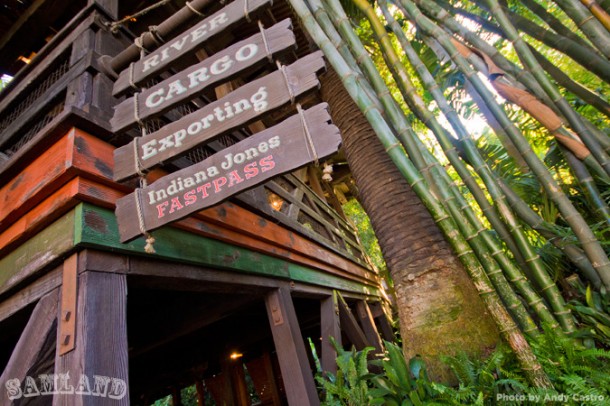
Ron Dominguez was a young man when Walt Disney bought his family’s farm. He grew up on ten acres that were along Cerritos Avenue. Cerritos went east to west between Harbor Boulevard and West Street. The street was vacated by the City of Anaheim so that Disneyland could be built. West Street later became Disneyland Drive.
The original property contained citrus groves, a house, and some mature trees. The house was moved and became construction offices. Many of the non-fruit trees were integrated into the park. Today, that orange grove is now the land beneath Cafe Orleans, Pirates of the Caribbean, the rain forest portion of the Jungle Cruise, the Golden Horseshoe Saloon, and the Mark Twain dock.
However, there was one tree in particular that held special meaning to the Dominguez family and they asked Walt if he could preserve it. This particular tree was a Canary Island Date Palm and it was planted in 1896 as wedding gift to Ron’s grandparents from the area’s first horticulturist.
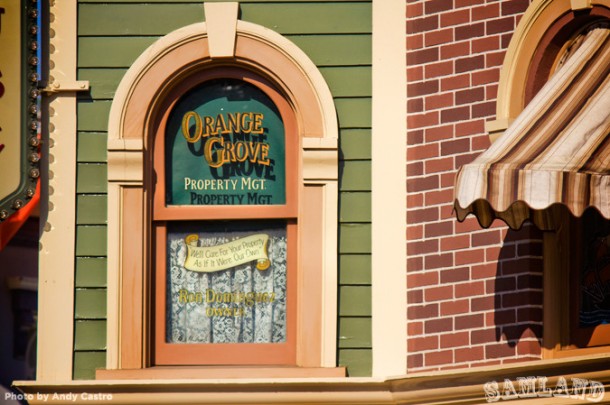
Ron Dominguez got a job at Disneyland as a ticket taker and was there on opening day. He was a tall fellow and one day was asked to portray Davy Crockett and walk around Frontierland. He enjoyed his time for a while but the constant attention got to him and he transferred to other duties. He continued to work at Disneyland and rose to the position of Executive Vice-President at Disneyland. He retired in 1994. Dominguez was honored on Main Street with a window for “Orange Grove Property Management.”
To find the Dominguez Palm walk to the Indiana Jones Fastpass entrance. Look for the fat tall tree trunk that punches through the building. They had to build the boathouse around the tree. Next time you are in the area give it a knowing nod and think of the Dominguez family.
![]()
Thank you for your kind support of my books folks:


You must be logged in to post a comment.